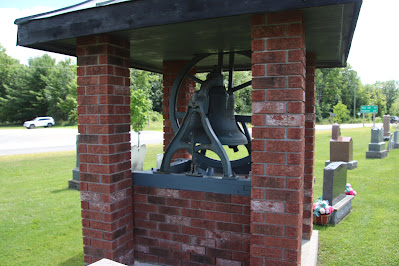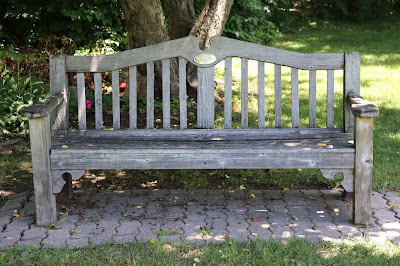The set of Rideau Canal Promenade plaques about early Ottawa Occupy a location west of the Rideau Canal Western Pathway, east of Queen Elizabeth Driveway and south of the Pretoria Avenue Bridge.
A Rough Start
Up to 5,000 labourers built the Rideau Canal, and many of them settled in Bytown. Lieutenant-Colonel By surveyed and set the first grid plan for the town — named after him — and the military maintained law and order until the Canal was finished. For nearly a quarter of a century, Bytown was a rough place. When a police force was finally formed in 1855, officers were paid per culprit arrested.
"... the lives and property of the inhabitants (are) in danger day and night in this new Town; by drunken persons employed on the works of the Rideau Canal."
– A Bytown magistrate, 1827
Des débuts difficiles
Jusqu'à 5 000 ouvriers construisent le canal Rideau et plusieurs s'éstablisent à Bytown. Le Lieutenant-colonel By arpente et définit le premier plan d'aménagement de la ville, qui porte son nom. Les militaires assurent le maintien d l'ordre jusqu'à la fin de la construction. Pendant près d'un quart de siècle, Bytown est une ville dangereuse. Quand un corps de police est finalement formé en 1855, les officiers sont payés en fonction du nombre de coupables arrêtés.
« ... la vie et les biens des habitants de cette nouvelle ville (sont) mis en péril jour et nuit par les ivrognes qui travaillent à la construction du canal Rideau. »
–Un magistrat de Bytown, 1827

The City Grows Up
In 1850, Bytown incorporated. Seven years later, the city — now called Ottawa — was chosen as capital of the Province of Canada. These changes brought benefits, including the first civic government. It was still a rough place, but once jobs became more stable and families started to settle here, the town looked to a gentler future.
Once Ottawa was named the capital, polite society emerged as a social force. Clubs and associations flourished, along with newspapers, exhibits and lectures. The Victoria Memorial Museum housed the first art gallery and national museum in 1916, when the Parliament Buildings burned, the Museum temporarily hosted both Houses of Parliament.
La ville s'épanouit
En 1850, Bytown est constituée en municipalité. Sept ans plus tard, la ville, maintenant appelée Ottawa, est désignée capitale de la Province du Canada. Ces changements amènent leur lot d'avantages, dont la première administration municipale. La Ville est toujours violente, mais au fur et à mesure que les emplois se stabilisent et que les familles s'établissent, l'avenir devient plus prometteur.
Une fois Ottawa choisie comme capitale, la bonne société devient une force social. Les clubs et les associations multiplent, ainsi que les journaux, les expositions et les conférences. L'Édifice commémoratif Victoria accueille la première galerie d'art et le premier musée national. En 1916, le musée abrite de façon temporaire les deux chambres du Parlemtn, ravagées par le feu.

A Capital Vision
Named as capital in 1857, Ottawa grew rapidly as government offices were built and hundreds of civil servants moved in. The prosperity and stability that came with them inspired a dream: to make a city worthy of being called "the capital." Beautification plans included the Rideau Canal, the centrepiece of this green and vibrant capital city.
"I ... keep a green spot in my heart for the city of Ottawa ..."
– Wilfrid Laurier, 1893
La vision d'une capitale
Nommée capitale en 1857, Ottawa connaît une croissance rapide grâce à la construction d'édifices gouvernementaux et à l'arrivée de centaines de fonctionnaires. La prospérité et la stabilité qui en résultent inspirent un rêve : créer une ville à la hauteur du titre de « capitale ». Les plans d'embellissement incluent le canal Rideau, l'élément central de cette capitale verte et vibrante.
« J'ai ... un faible pour la ville d'Ottawa ... »
– Wilfrid Laurier, 1893 (traduction libre)

At Work and at Play
The Second World War brought thousands of jobs in defence administration and research to the city. In the post-war boom, Ottawans with disposable income for homes, cars and leisure needed recreational areas and green spaces. The Canal became a key feature of their grand design.
The story of the Rideau Canal reflects the story of Ottawa and Canada itself. From the Canal's early ties to Britain to its current role as a scenic commuter route and year-round venue for celebrations, this UNESCO World Heritage Site is a jewel in the heart of Canada's capital.
Travil et loisirs
La Seconde Guerre mondiale crée des milliers d'emplois dans l'administration de la défense et la recherche. Avec la croissance démographique de l'après-guerre, les Ottaviens disposant d'un revenu pour la maison, la voiture et les loisirs ont besoin d'aires de loisirs et d'espaces vert. Le canal devient un élément clé de ce grand dessein.
L'histoire du canal Rideau est le reflet de l'histoire d'Ottawa et du Canada. Des premiers liens entre le canal et la Grande-Bretagne à son rôle actuel en tant que route de banlieue pissoresque et lieu de célébration à longueur d'année, ce site du patrimoine mondial de l'UNESCO est un joyau au cœur de la capitale du Canada.

Samuel McLaughlin, Library and Archives Canada, C-003039
Samuel McLaughlin, Bibliothèque et Archives Canada, C-003039
Major's Hill Park, on the Canal's east side across from Parliament Hill, was Ottawa's first part, established in 1832.
William James Topley, Library and Archives Canada, C-016714
Créé en 1832, le parc Major's Hill, sur la rive est du canal en face de la colline du Parlement, est le premier parc, d'Ottawa.
William James Topley, Bibliothèque et Archives Canada, C-016714
Aerial View (of Ottawa), 1950. Notice the temporary Second World War National Defence buildings in the top centre.
Canada Science and Technology Museaums Corporation, CN Collection, CN2815
Vue aérienne (d'Ottawa), 1950. Remarquez les bâtiments temporaires de la Défense nationale de la Seconde Guerre mondiale en haut au centre.
Société des musées de sciences et technologie du Canada, Collection CN, CN2815












































